Every day more and more users make a variety of purchases online.
The most popular payment method is plastic bank card, when paying, we enter card account information. You can, of course, pay for purchases and services using , but it’s still more convenient to do this without leaving your home.
When paying for a purchase online, the user will see the column: “CVV2/CVC2/CID” with the note “this field must be filled out.”
Let's figure it out where can I find this code and what does this abbreviation mean?.
What are CVV2 (CVC2) codes and what is their purpose?
First, let's decipher the meaning:
- CVC2 code (Card Validation Code 2) is a 3-digit combination of Maestro system card numbers;
- CVV2 code (Card Verification Value 2) is also a three-digit security combination, but on a Visa card.
The required combination is entered into the specified field when paying for purchases online to confirm the action by the cardholder.
It also happens that CVV2 is not indicated on the card. He not indicated on entry-level bank cards systems:
- MasterCard Electronic;
- Mastercard;
- Cirrus;
- Maestro;
- Visa Electron.
Platinum).
The same code for payment cards of the system is called Card Validation Code 2 - CVC2. The essence is the same, only the terminological combinations themselves differ.
CVV2 code: what is it and what is it for?
This number (usually 3 digits, but 4 are possible) allows you to confirm the operation that the user carries out via the Internet. This is a way to confirm the authenticity of the card and the fact that the user is the owner of the card (after all, only he can see the number on the real card). That is, a specific person certifies that he physically owns the card.
Those who know what the CVC2 (CVV2) code is on bank card, it is not always used. It is not requested by all sellers. Some banks prohibit these for certain cards. Now there are other authentication methods (for example, via SMS to the number specified by the bank client).
Where is the CVC2 code (CVV2) indicated?
The CVC2 (CVV2) code is listed on the back of the card, on the magnetic strip, after the owner’s signature (the outermost numbers on the right). It is applied to the card through embossing or ident printing (the symbols seem to be engraved and then painted; they do not protrude above the surface of the card).
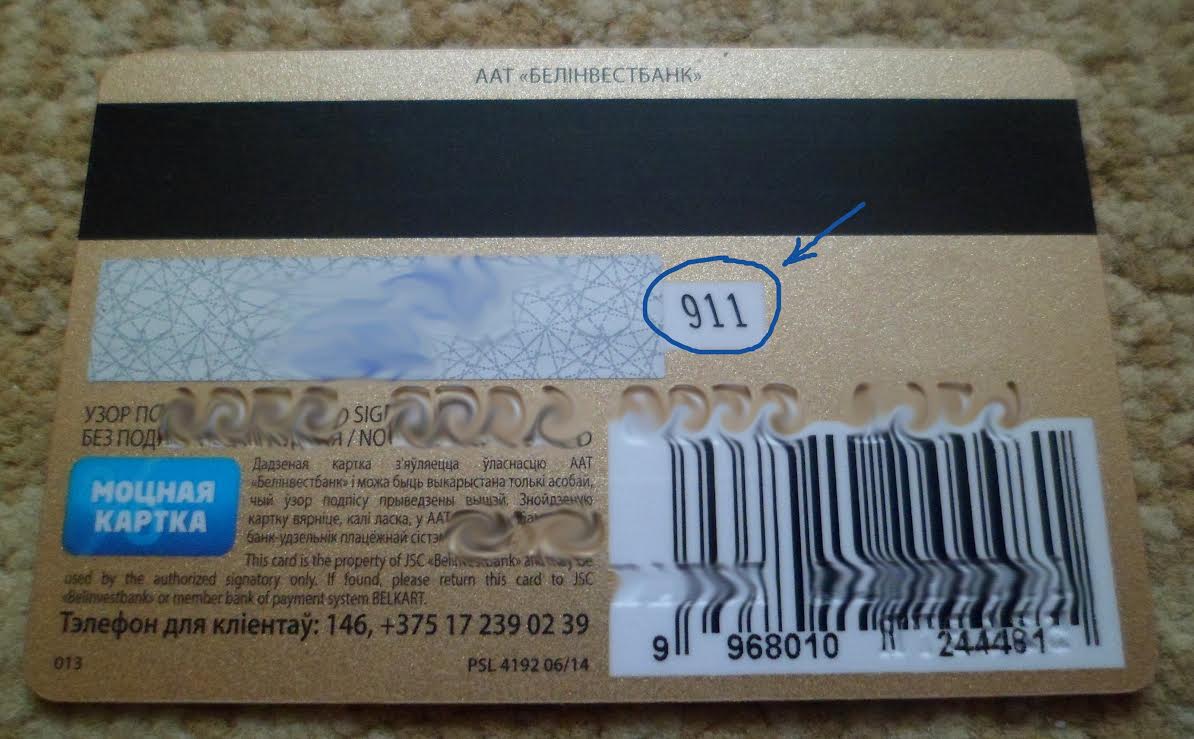
There are cases when CVV2 is not on the map. It is not indicated on entry-level debit (payment) cards Visa Electron, Mastercard Cirrus Maestro, MasterCard Electronic. However, when a card is issued, a code is still created.
Briefly about terminology
Synonyms of CVC2 (CVV2):
- CVVC (Card Verification Value Code),
- V-Code, V-Code (Verification Code),
- CSC (Card security code),
- CVD (Card Verification Data).
The CVV (CVC) code is written on a magnetic stripe. It is checked by the system when a person uses an ATM or terminal.
Security Guarantee
Sellers of goods and services are prohibited from storing CVC2 (CVV2) codes even for a short time. They serve only for instant authentication of the card user.
If you need to send a photocopy or scan of a payment card (sometimes requested, for example, by bookmakers), the CVC2 (CVV2) code must be sealed (covered with a piece of dense material).
The CVC2 (CVV2) code cannot be disclosed to outsiders (as well as posting photos of your bank cards online), otherwise attackers will be able to pay for purchases by stealing card data.
When purchasing goods on the Internet, you must enter not only the card details: its expiration date, full number and name of the holder, but also enter the bank CVV2 code.
We will look at what cvc2 is on a bank card in this article. It is worth noting in advance that this security bank code goes by several names, depending on payment system- card issuer.
Therefore, if in the future you come across one of them, don’t get confused, everything is simple.
So, the types of codes that are in effect today (their alternative names):
- CVV2 (Card Verification Value 2) – this is the name of the code for the VISA payment system;
- CVC2 (Card Verification Code 2) – the name of the combination for the MasterCard payment system;
- CID (Card Identification) – for American Express cards.
Now let's talk about where cvv2 and cvc2 are located on a bank card - the treasured numbers are usually located on the back of the card.
If suddenly you don’t find them there, most likely your card simply does not support the technology of paying for goods and services via the Internet.
In such a situation, you need to issue another card, if possible created exclusively for payments on the Internet. This significantly reduces the likelihood of funds being stolen from your balance and ensures security.
Possible code placement:
- on Visa and MasterCard cards, three digits are always located on the back of the plastic, and specifically on a special strip where the cardholder is required to leave a sample of his signature. Less commonly, the code can be found on the front of the card, but this is still possible. Example - a virtual card from the issuer Alfa-Bank;
- On the front side, the protective CID is placed according to American Express rules. It is written above the card number in a slightly smaller font (more specifically, above the last two digits of the number and may be slightly shifted to the edge of the card to the left).
What and how is it used?
Using this number, the user can confirm his intention to perform an operation to purchase something via the Internet. By entering the code, the cardholder proves that he is the initiator of the transaction, i.e. physically possesses this payment instrument.
When understanding what cvv2 is on a bank card, you should understand that it is not always requested by all sellers. Instead, authentication via SMS can be used (when the bank sends a message with a digital code to the client’s phone number, which is then entered on the website).
The reason for this decision was the increasing incidence of theft of user personal data, so it is now necessary to develop and use new security options and technologies.
On an online store page, the cvv2 input field may also be called a place to enter a security code or card identification code, and may also be called a security number.

A transaction by entering the CVV2 confirmation code is carried out according to the following algorithm:
- first the user must find the product he needs on the seller’s website, then add it to the cart;
- Next, you need to enter all the card details that the store will need, including the code (if it is requested or the bank will send the secret combination to the specified mobile number);
- then wait for the payment to be accepted. If there is enough money on the balance, all details are entered correctly, the expiration date of the plastic card is in order and the available limit of funds for the operation allows, the payment will go through.
If the cvv2 (cvc2) code is not on the bank card, then the operation will not work. Entering the code incorrectly will also cause a rejected payment.
At the same time, there are at least 3 more reasons why a submitted application may be rejected.
- The first and most important thing is that the client simply made a mistake when entering data; for example, even one incorrect digit in the card number can lead to a refusal.
- The second reason is that there are simply not enough funds in the account to complete the transfer or there is a daily limit (limit for paying for purchases on the Internet), so the procedure will be rejected.
Well, one more thing - the card simply does not support payment via the Internet, because... not designed for this kind of operation.
By the way, you can make payments not only from a virtual or debit card, but also pay using a credit card using borrowed funds from the bank. The main thing is to check whether there are any limits and correctly enter cvc2 from the existing card.
Compliance with safety rules when working with code
Making purchases over the Internet is not dangerous, primarily because sellers and websites are prohibited from storing information about the card number and CVC2 codes entered by visitors, even for a short time.
This data helps to instantly authenticate the card holder and its function is complete. At the same time, the owner of the payment instrument must take care of his financial security.
If someone asks to send a photo and a scan of the card from the front and back, this should not be done under any circumstances without covering the code field with thick paper (alternatively, the photo can then be processed using an editor to blur the numbers or by sketching them ).
This way, the user will protect himself from fraudsters, who will be able to instantly use the card to pay on the Internet. For exactly the same reason, it is prohibited to post a photo of your card online.
People who actively shop on the Internet and often pay online need to ask their bank to issue another card - an electronic one. It is linked to a real account, then, if necessary, to pay for the goods, the person simply transfers the required amount to it and makes calculations.
As soon as funds are debited from the virtual card, its balance will be zero, which means that even if the data is compromised, fraudsters will still have nothing to profit from. For the next successful payment, the account will again have to be topped up with the required amount of money.
20Oct
What is CVV/CVC (CVV2)/(CVC2) code
CVV (CVV2)/CVC (CVC2) code is a special bank card security code that is included in the account and appears on the back of the actual card.
What is a CVV or CVC code on a bank card - in simple words.
In simple words, CVV or CVC codes are special numbers consisting of three (sometimes 4) digits that provide additional security when purchasing online. The purpose of the CVV/CVC number is to provide an additional layer of security to the cardholder, making it more difficult for unauthorized persons to use the card. Of course, this is not an absolute guarantee of safety, but without physical card or a photo of its back, it is much more difficult for a fraudster to transfer money via the Internet. Moreover, now almost all transactions are accompanied by the introduction of a special confirmation code, which is sent to the phone via SMS from the bank.
Where is the CVV or CVC on a bank card?
As a rule, the CVV (CVV2)/CVC (CVC2) code is located on the back of the card immediately after the last four digits of the bank card number itself. This number consists of three digits. More details about where the CVV(CVV2) or CVC(CVC2) code is located can be seen in the figure below.
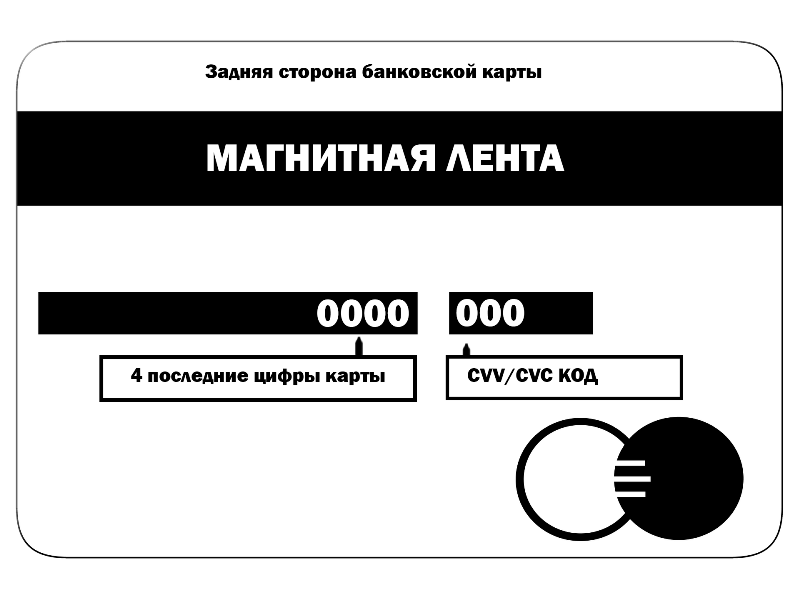
It is worth noting that not all cards have codes located on the back side. There are bank cards where this code is imprinted on the front side, but in most cases this practice is common in the USA.

What is the difference between CVV (CVV2) and CVC (CVC2) codes?
In fact, in practice there is no difference between these codes; the differences lie only in the definitions themselves and the payment cards that use them. For example, cards VISA use the definition CVV (C ard V erification V alue) which translates as “ meaning card verification" And the cards MasterCard use the definition C.V.C. (C ard V erification C ode) which translates: “ code card verification" So, as you can see, all the differences are only in the names, but their function is the same.
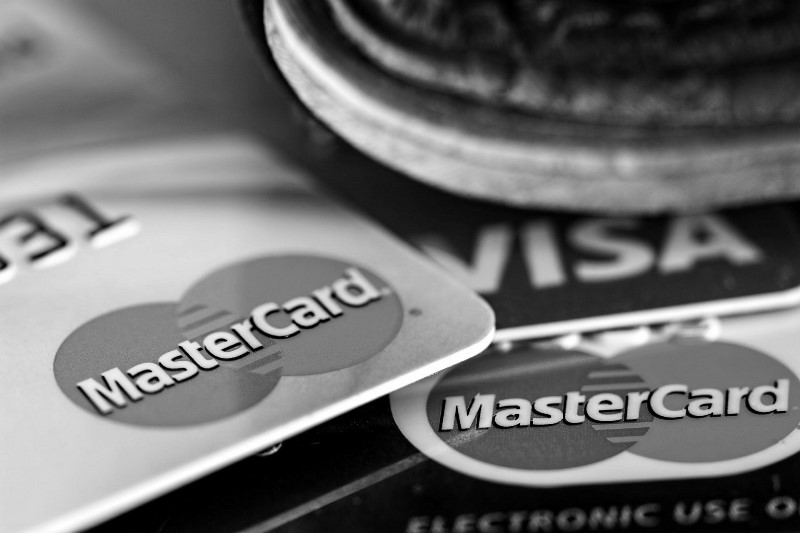
Why do we need CVV or CVC codes in practice?
As mentioned earlier, these codes are only necessary for transactions that are made via the Internet. The fact is that when making a payment at an offline store terminal, the client enters a PIN code known only to him, which, in principle, confirms the fact that he is the owner of the card. When paying online, there is no option to enter your PIN code for security reasons. Thus, to verify that the client who placed an order on the site actually has a credit or debit card, it is necessary to enter the CVV or CVC code from the physical card. It goes without saying that if a bank card was physically stolen and not blocked in a timely manner, then the likelihood of funds being withdrawn from it is very high. Especially if she was kidnapped along with the phone she was connected to.
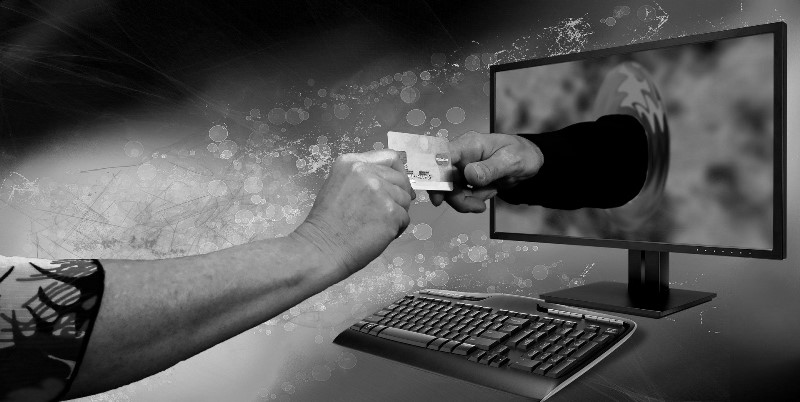
When making payments on the Internet and carrying out other operations, a verification code is used - CVV. It is located on the card itself and serves for additional identification of the user. For security purposes, it must be entered as a mandatory detail for payments that do not require the physical presence of a credit card. It is an additional security element when conducting certain transactions.
What is the CVV code on a PrivatBank card? It is a number consisting of three digits. The user can find it on a credit card. It is located on the back of the plastic below the magnetic stripe. Official name code CVV2, however, everyone prefers to call it simplified. The credit card has a panel for the owner's signature. On the right side there are three numbers - this is the number for verifying the authenticity of the payment system card.
Where is the CVV code on the PrivatBank card?
But it is not always possible to recognize it this way, since it is not present on some credit cards. If used frequently, the area where it is applied given number, may be damaged. In such cases, it is difficult to visually determine it. The bank makes it possible to find it out in the Privat24 system. This is also true for.
We look at the CVV code in Privat24
If for some reason there is no code or in the case when payment is made from a virtual card, you can get it from Privat24. To do this you need:
- log in to the Privat24 system;
- enter the “My Accounts” menu;
- select the credit card you want to use to receive the code;
- click on the corresponding link on the right, above the “Card/Account Management” menu;
- in the window that opens, click the “Next” button;
- enter the password that will be sent to mobile phone to confirm the operation.
After this, a message will appear on the screen that the application for the code has been accepted for processing. After a few minutes, the user will receive an SMS on his mobile phone containing new data.
This option is also available in the “Card/Account Management” menu in Privat24, or immediately select "CVV Code".
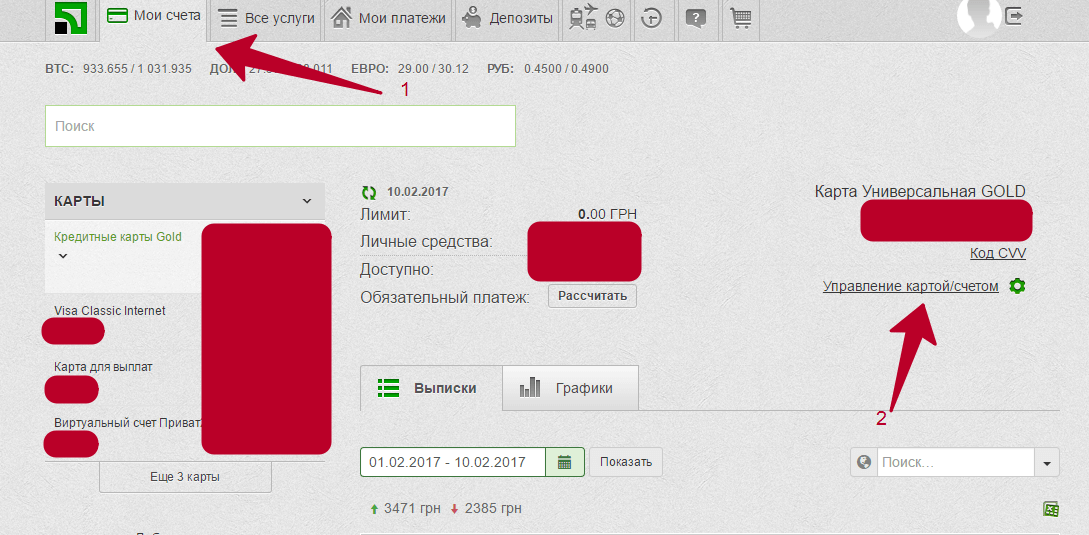
In the list of operations you need to select the CVV2 code and click “CVV code”. After this, a message will appear on the screen that the code can be found by pressing the button as shown in the figure below.

Security requirement
The above-mentioned data is prohibited from being passed on to third parties; this is one of the security requirements. The bank strongly does not recommend storing passwords on your phone. The received code must be remembered, and the SMS in which it was contained must be deleted.
If you have a bank credit card, you can not only withdraw cash, but also make payments. When paying in stores, ATMs, terminals, the legality of the transaction is verified by entering a PIN code that is known to the owner. When making payments online, a PIN code is not used. In this case, you must enter the details: number, expiration date, embossed name and the number indicated on the card. If you don’t have it, you can get it in the Privat24 system.
comments powered by HyperComments